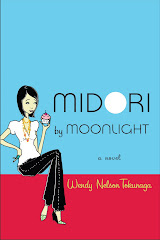I was psyched when the good folks at W.W. Norton & Co. Publishers sent me two copies of the latest English-translation novel by acclaimed Japanese author Ryu Murakami, Popular Hits of the Showa Era, to use as giveaways. An irreverent satirical take on the inter-generational battle of the sexes, this novel was first published in 1994 in a serialized version in the Japanese magazine Playboy Weekly. In 2003 it was made into the film Karaoke Terror: The Complete Showa Japanese Songbook directed by Tetsuo Shinohara. You can watch the trailer HERE.
Not to be confused with the other Murakami writer (Haruki), Ryu Murakami has won the prestigious Akutagawa Prize and many of his books have been made into films including Audition. I remember reading his first novel, Almost Transparent Blue about drug abuse and promiscuity among disaffected Japanese youth as a beginner Japanophile in the 1980s, and it really impressed me.
Popular Hits of the Showa Era is quite funny a lot of the time, but it’s not for the faint of heart. There’s a fair amount of violence and graphic scenes, but it’s all in “good fun” as a group of young slacker guys escalate a battle against an unlikely (and hilarious) gang of obasans (middle-aged career women) who are out for revenge when one of their members is found brutally murdered. I’m not sure if the protagonist from my novel, Midori by Moonlight, (Midori Saito) would have joined these gals, but who knows? And despite it being written in the mid-1990s, I think a lot of what the book has to say about modern Japanese society and the pressures both genders face is still relevant today.
This new English translation of Popular Hits of the Showa Era will be released at the end of January 2011 as a trade paper back. But I’m giving away two advanced reader copies to two lucky winners. All you have to do to be eligible is write a comment on this blog by Sunday, November 7. Tell me about other Ryu Murakami books you’ve enjoyed or films based on his novels. Or share about your favorite contemporary Japanese authors. Then I’ll pick two winners at random on Monday, November 8 and contact them for their postal mail addresses. No geographic restrictions apply!















